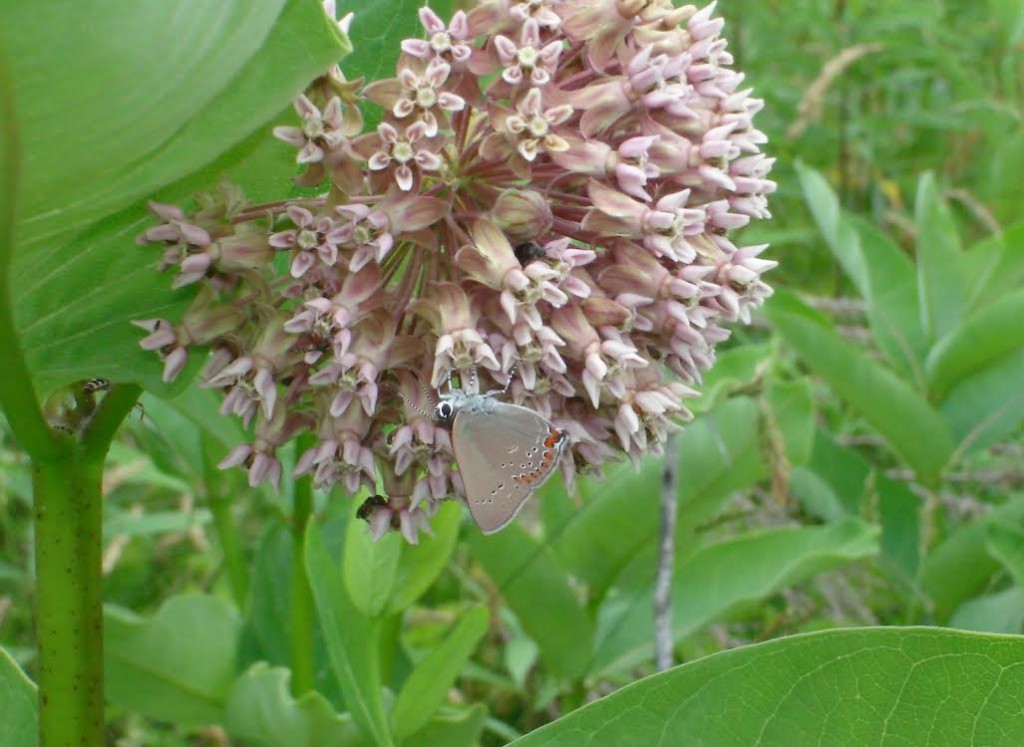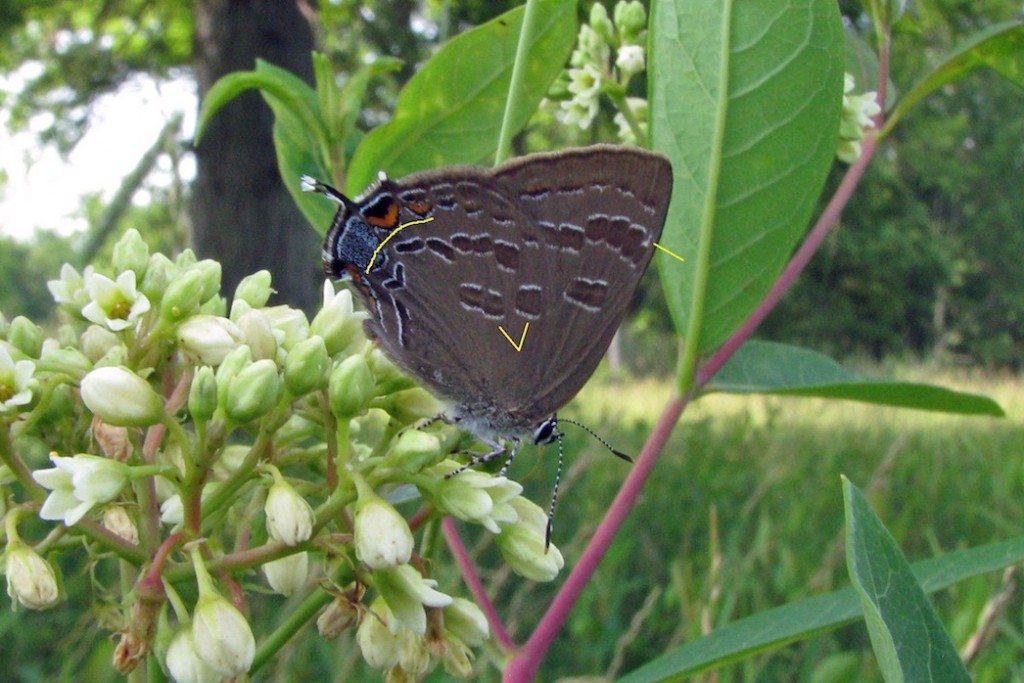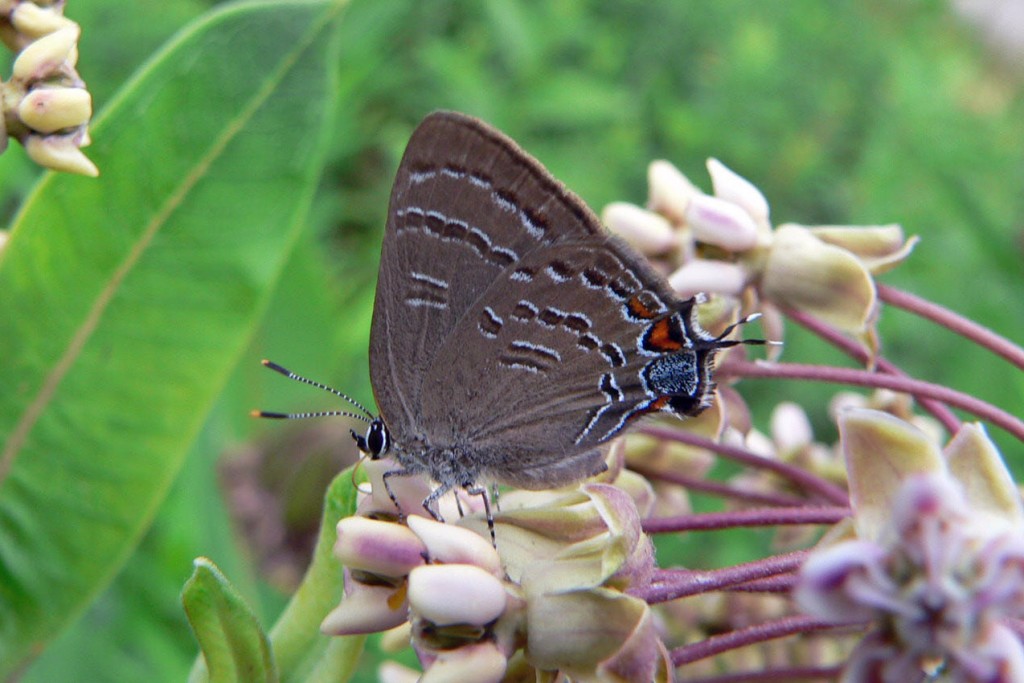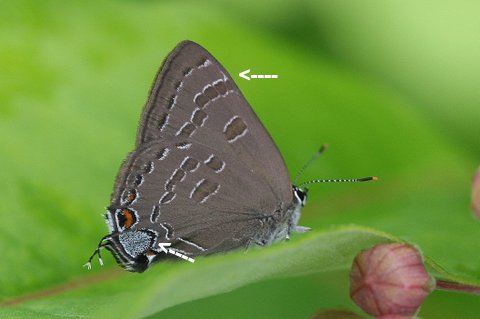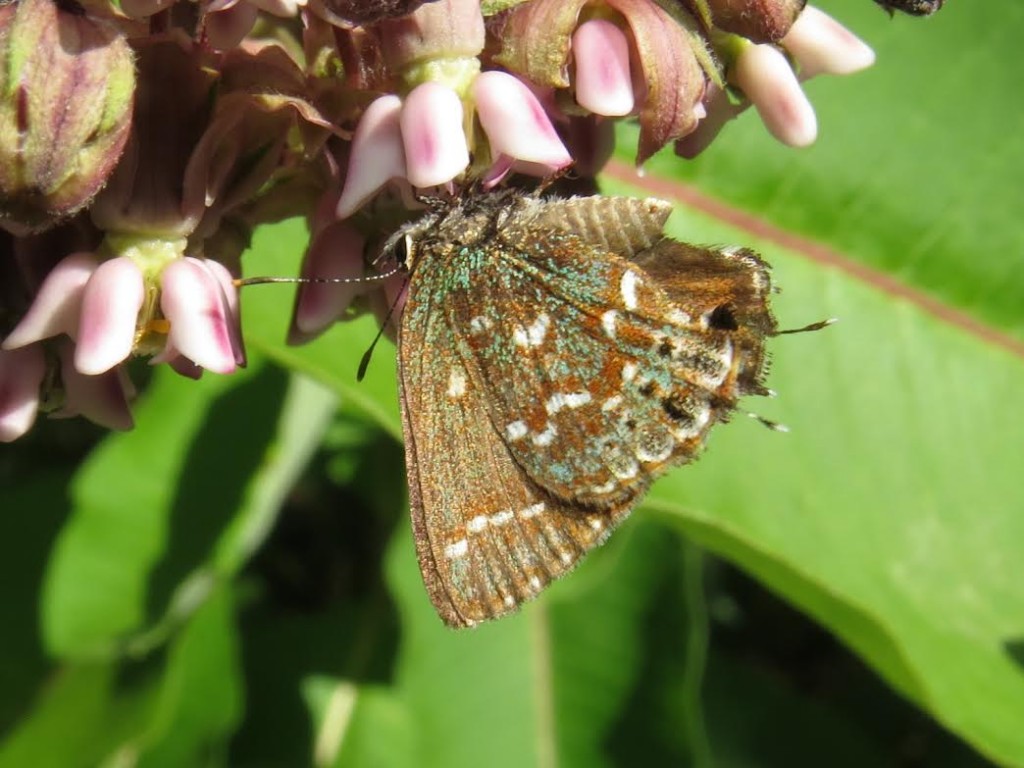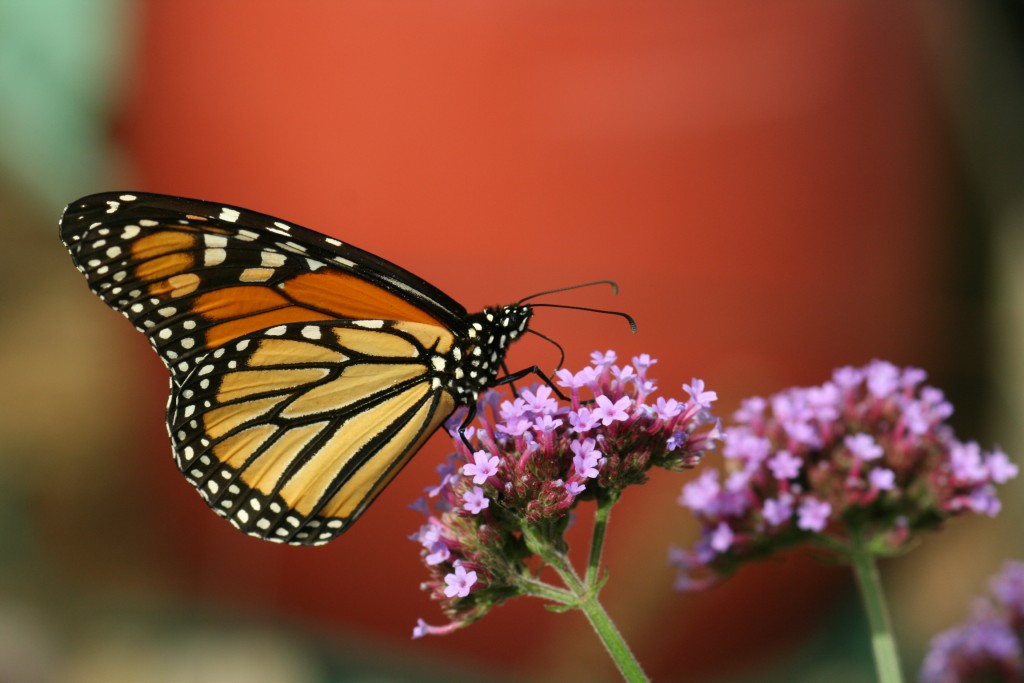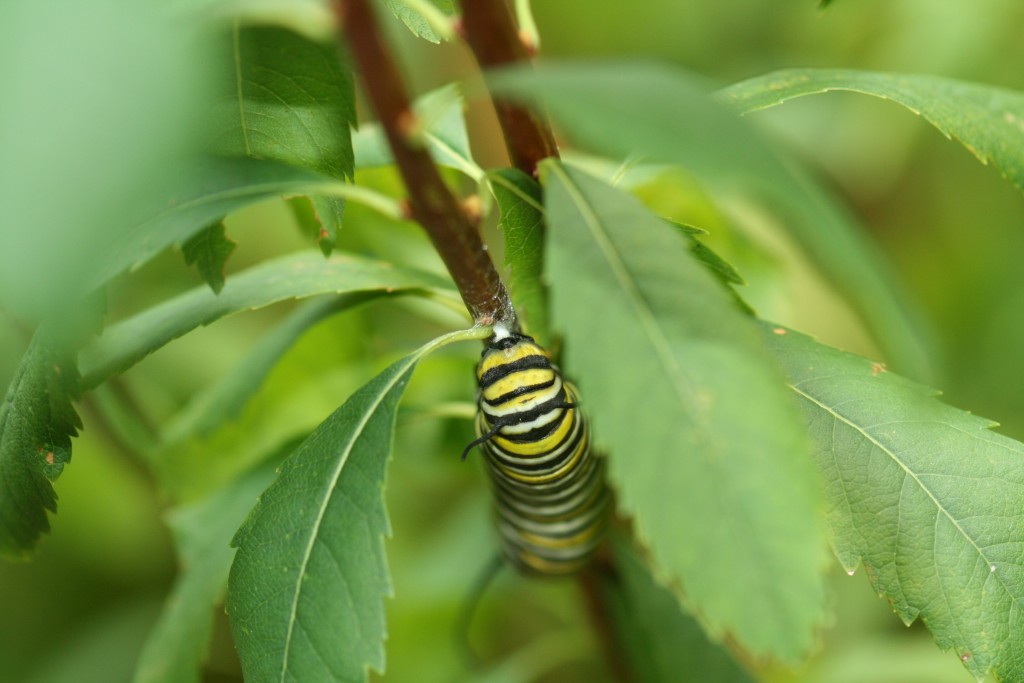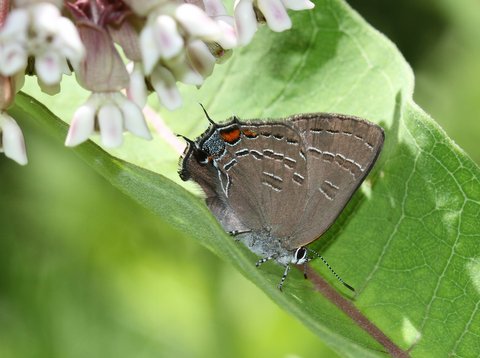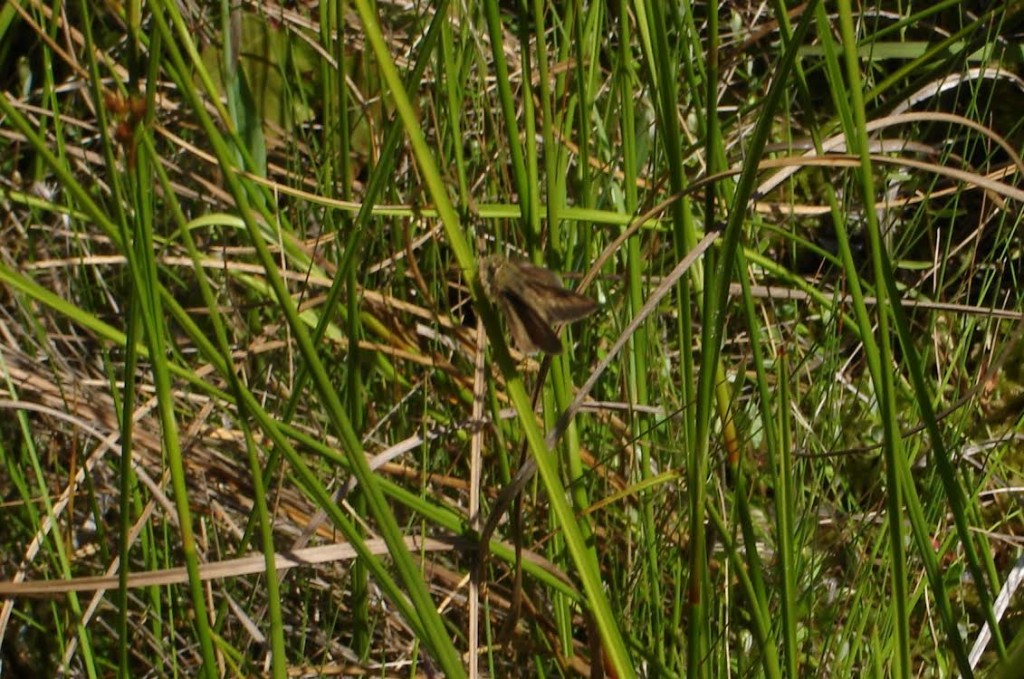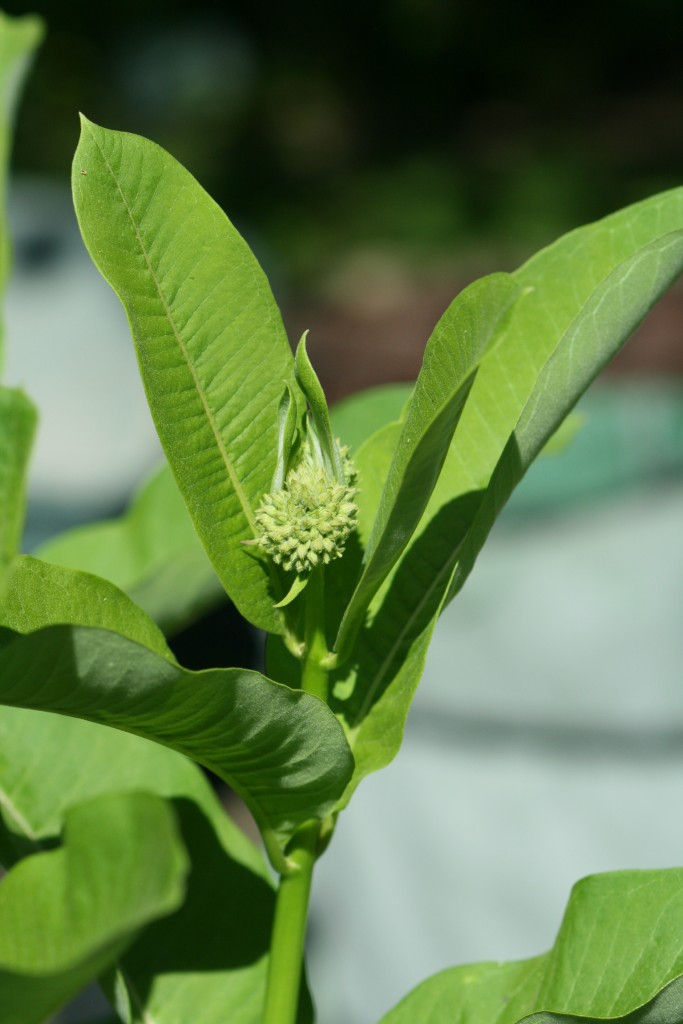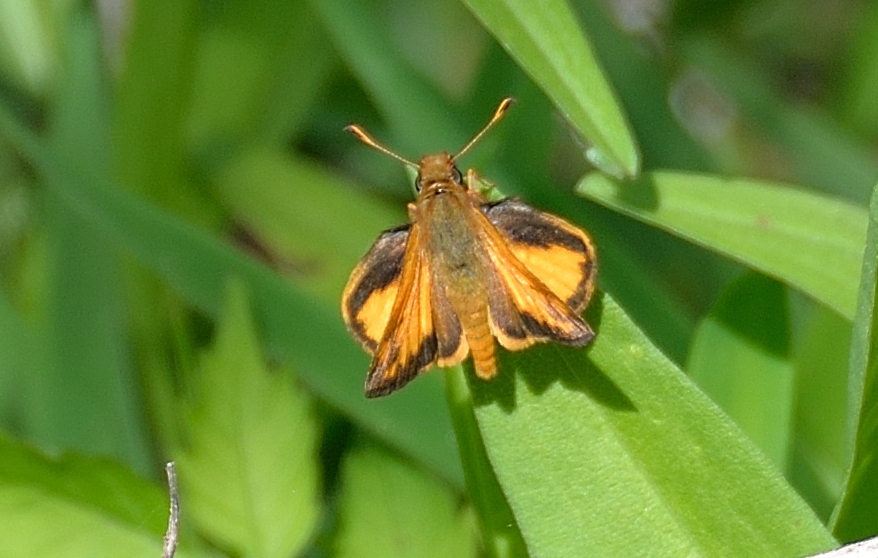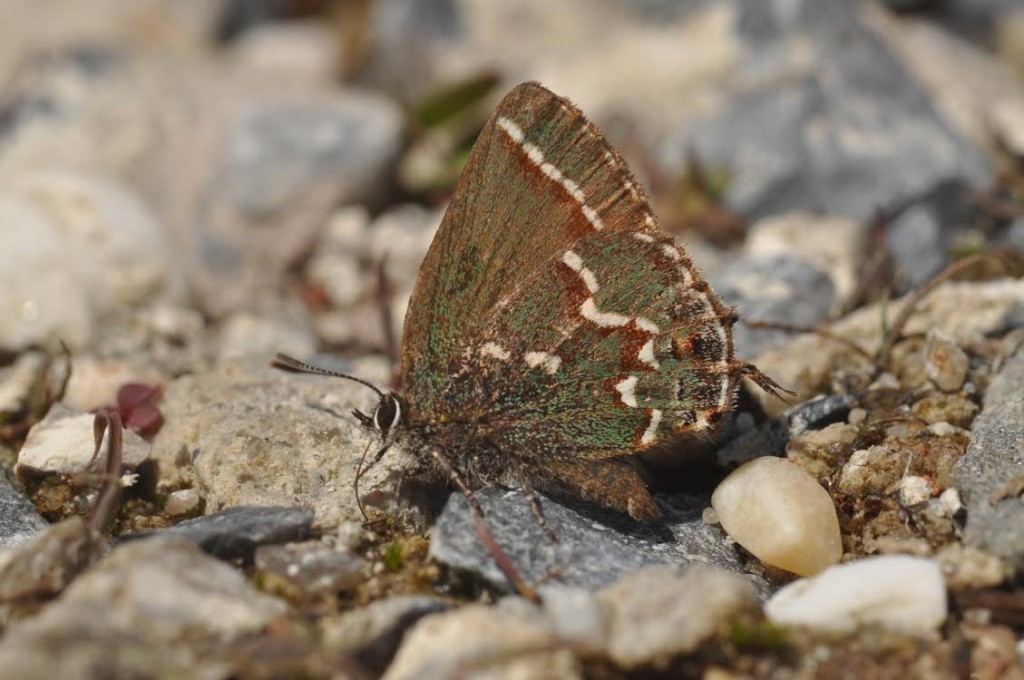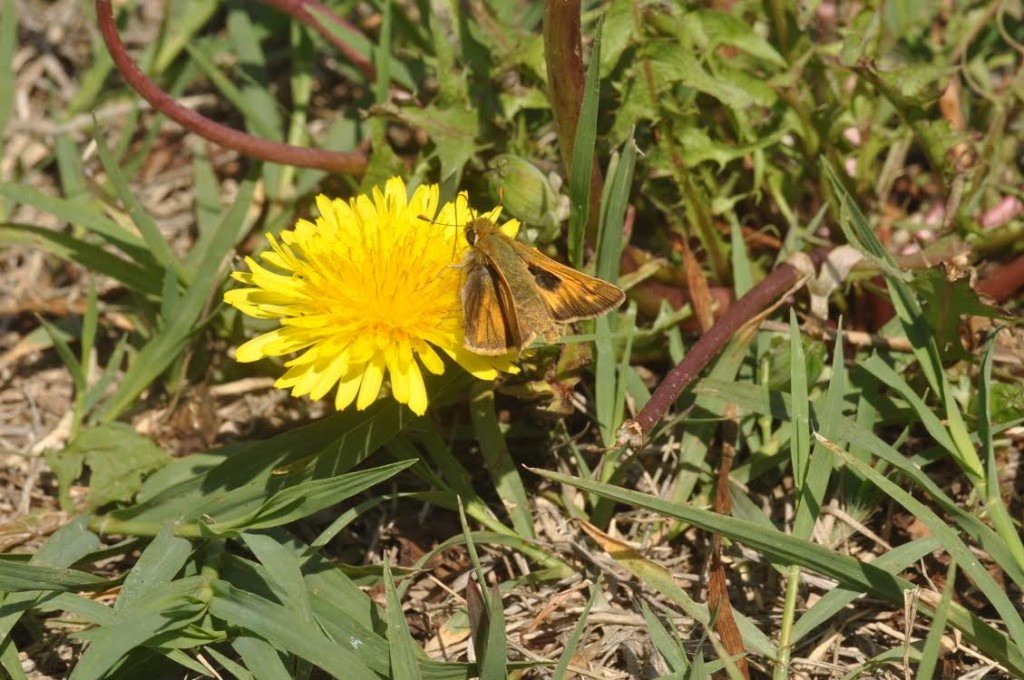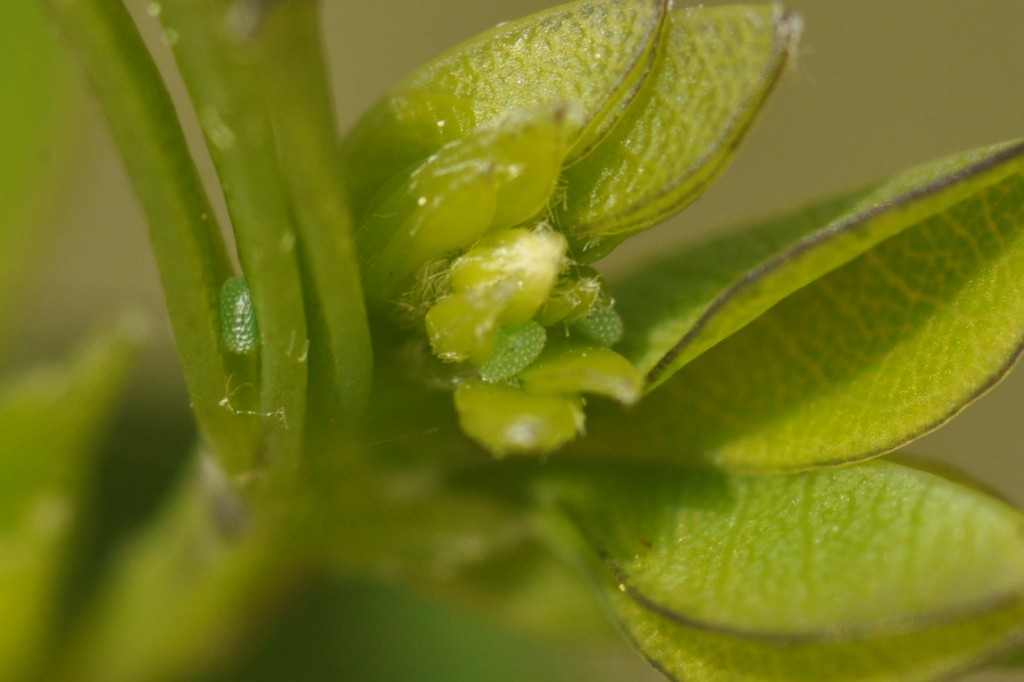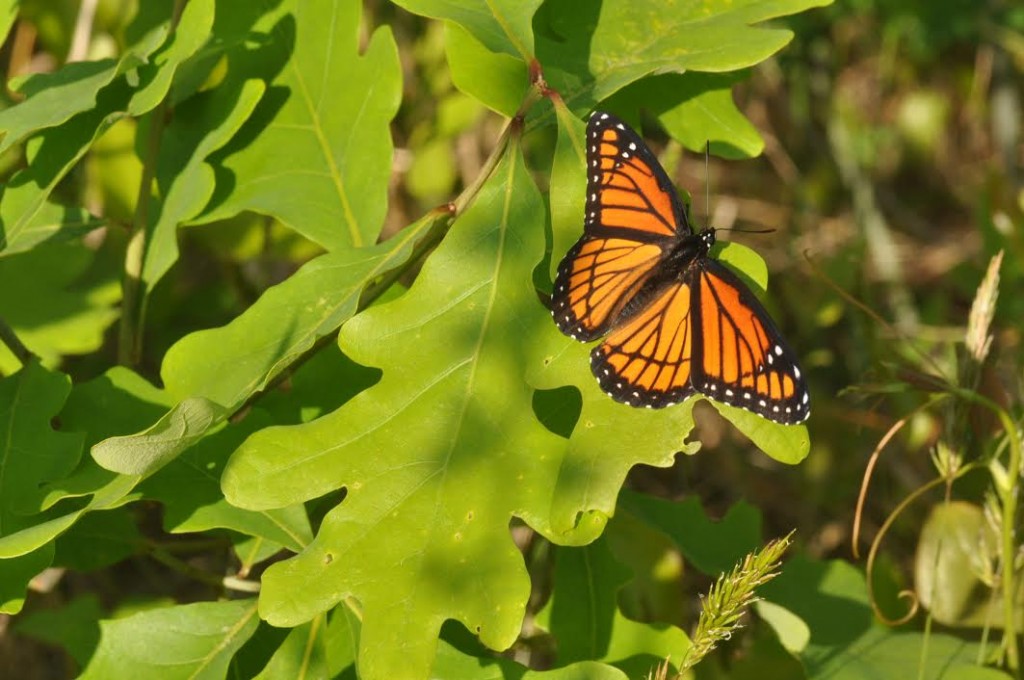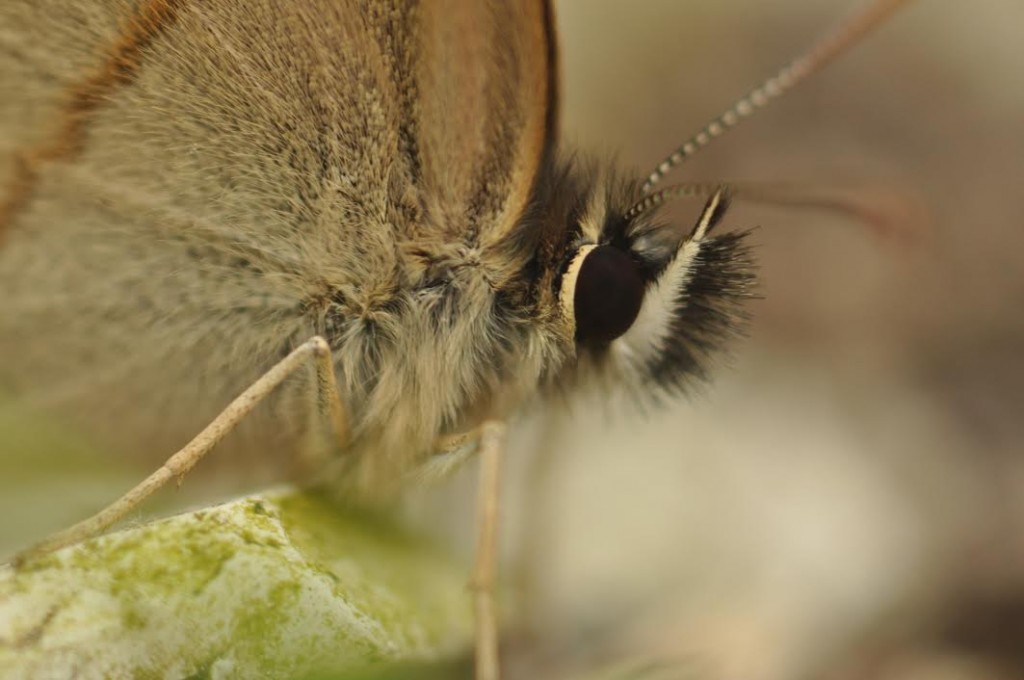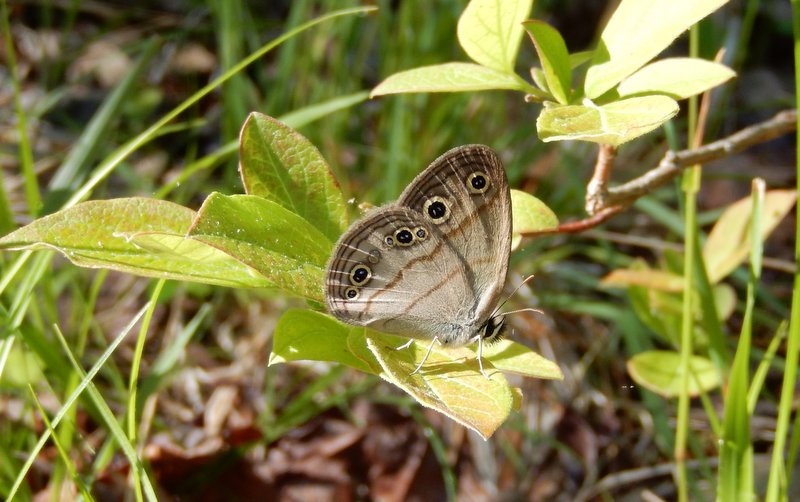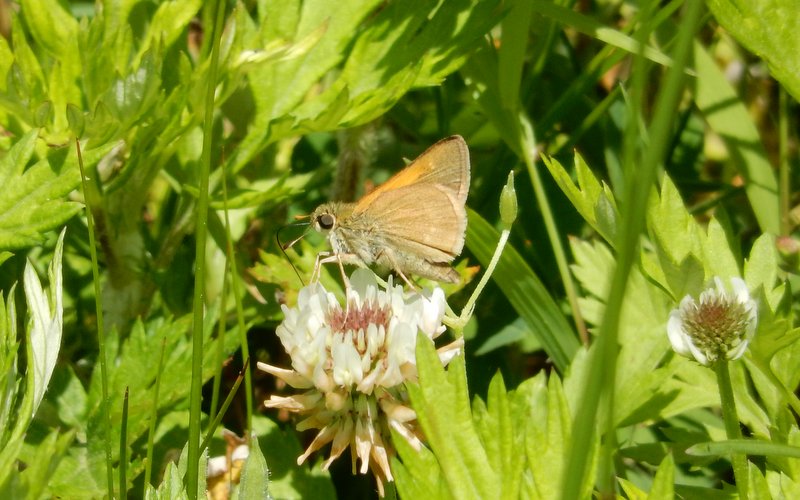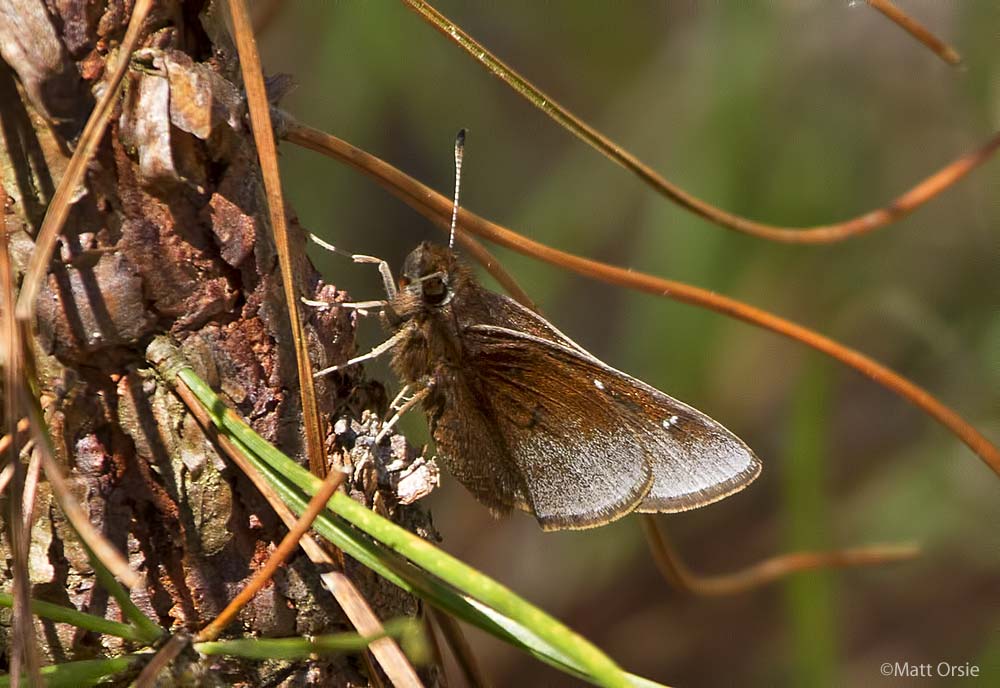We compiled an excellent list in June 2014 with 70 species found. That broke our all-time high for June (old record = 69 in June 2012), marked only the second time we have ever reached 70 species in a single month, and was within one species of tying our best month for diversity ever: July 2013 when we found 71 species in our eight southern NJ counties.
Here’s our list of all June 2014’s species with date of the first record of the month. The twenty-four species new for the year are in bold.
6/1/2014 Black Swallowtail
6/1/2014 E. Tiger Swallowtail
6/1/2014 Spicebush Swallowtail
6/1/2014 Cabbage White
6/15/2014 Clouded Sulphur
6/1/2014 Orange Sulphur
6/22/2014 Harvester
6/15/2014 American Copper
6/8/2014 Bronze Copper
6/8/2014 Bog Copper
6/18/2014 Coral Hairstreak
6/25/2014 Edward’s Hairstreak
6/15/2014 Banded Hairstreak
6/23/2014 Striped Hairstreak
6/20/2014 Northern Oak Hairstreak
6/2/2014 Frosted Elfin
6/1/2014 Eastern Pine Elfin
6/2/14 Juniper Hairstreak
6/27/2014 Hessel’s Hairstreak
6/3/2014 White M Hairstreak
6/15/2014 Gray Hairstreak
6/1/2014 Red-banded Hairstreak
6/1/2014 Eastern Tailed-Blue
6/1/2014 Summer Azure
6/4/2014 American Snout
6/6/2014 Variegated Fritillary
6/16/2014 Meadow Fritillary
6/1/2014 Pearl Crescent
6/1/2014 Question Mark
6/6/2014 Eastern Comma
6/19/2014 Mourning Cloak
6/1/2014 American Lady
6/10/2014 Painted Lady
6/1/2014 Red Admiral
6/10/2014 Common Buckeye
6/1/2014 Red-spotted Purple
6/2/2014 Viceroy
6/10/2014 Hackberry Emperor
6/29/2014 Tawny Emperor
6/7/2014 Appalachian Brown
6/1/2014 Little Wood-Satyr
6/25/2014 Common Wood-Nymph
6/3/2014 Monarch
6/1/2014 Silver-spotted Skipper
6/1/2014 Southern Cloudywing
6/2/2014 Northern Cloudywing
6/3/2014 Hayhurst’s Scallopwing
6/1/2014 Sleepy Duskywing
6/1/2014 Juvenal’s Duskywing
6/4/2014 Horace’s Duskywing
6/7/2014 Wild Indigo Duskywing
6/4/2014 Common Sootywing
6/8/2014 Swarthy Skipper
6/1/2014 Least Skipper
6/9/2014 European Skipper
6/22/2014 Fiery Skipper
6/1/2014 Peck’s Skipper
6/1/2014 Tawny-edged Skipper
6/2/2014 Crossline Skipper
6/15/2014 Northern Broken-Dash
6/4/2014 Little Glassywing
6/1/2014 Sachem
6/6/2014 Delaware Skipper
6/28/2014 Rare Skipper
6/28/2014 Mulberry Wing
6/1/2014 Zabulon Skipper
6/2/2014 Aaron’s Skipper
6/15/2014 Broad-winged Skipper
6/1/2014 Dun Skipper
6/13/2014 Salt Marsh Skipper
Our high diversity count was made possible by several factors:
— three single-brooded spring species flew into June: eastern pine elfin, sleepy duskywing, and frosted elfin;
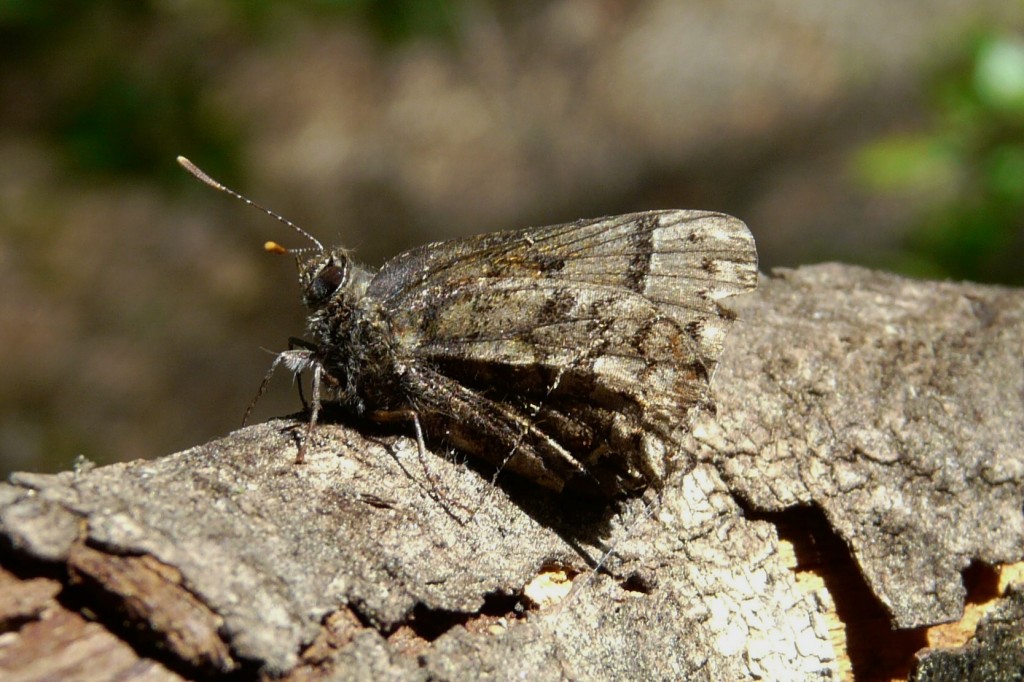
This very worn, late eastern pine elfin was photo’d by Shawn Wainwright on Cattus Island (OCN) on June 2.
— several FOYs emerged in the last few days of the month, just in time to be counted, including tawny emperor, mulberry wing, and rare skipper;
— a mix of hard-to-find rarities were tracked down in hard-to-reach spots: bronze copper, meadow fritillary, and others….
— several unexpected butterflies made solo appearances: an early fiery skipper, a second-brood Hessel’s hairstreak, and a northern oak hairstreak found at night at a moth light (!);
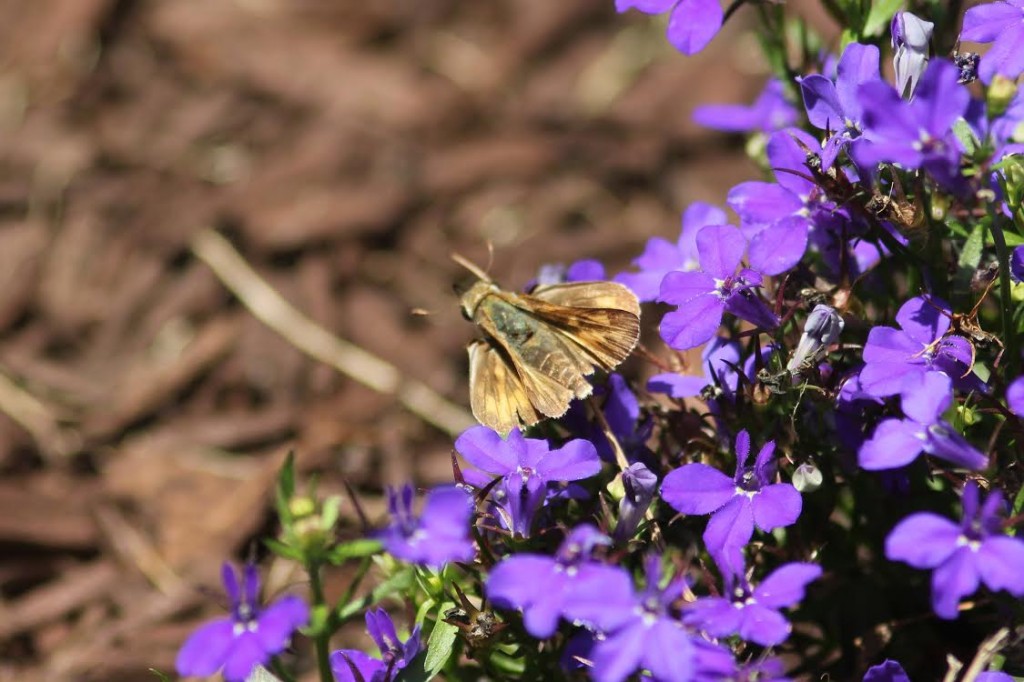
This fiery skipper, found and photo’d by Jesse Amesbury in his yard in Cape May Courthouse, on June 22 was the, only individual reported during the month.
— and, most important of all, we had so many alert and observant butterflyers out in the field tracking all the activity.
Contributors, June 2014:
We had at least 28 observers in the field during the month
Will Kerling, Chris Tonkinson, Brian Johnson, Chip Krilowicz, Dave Amadio, Jack Miller, Steven Glynn, Chris Herz, Pat Sutton, Clay Sutton, Cynthia Allen, Jean Gutsmuth, Jesse Amesbury, Jesse Connor, Jack Connor, Jim Dowdell, Marilyn Henry, Michael Drake, Sandra Keller, Denise Bittle, Jim Springer, Ahmet Baytas, Michael O’Brien, Shawn Wainwright, Teresa Knipper, Paula Williams, Lynn Jackson, and Kathy Horn. . . .
and we gathered more than 1900 separate observations of an estimated 9000+ individual butterflies.
Here’s a pdf of the spreadsheet for all observations in June sorted by species. Hit the plus sign for easier viewing.
A special thanks goes to Pat Sutton for compiling and logging in all the reports from her Cumberland NABA Count on June 24.
And thanks to all observers out there watching and recording! Because we have so many active and enthusiastic participants, our log grows richer every month. Keep at it, everyone!
jc




